The next guest in our interview series is Chloé Rutzerveld, young talented and promising Food and Concept designer, from Eindhoven University of Technology. Chloé is interested in combining aspects of food, design, nature, culture and life sciences in a form of critical design. She uses food as a medium to address, communicate and discuss social, cultural or scientific issues.
Throughout 2014, Chloé worked on a 3D food printing project, titled Edible Growth, to show how high-tech or lab-produced food doesn't have to be unhealthy, unnatural or not tasteful. Her concept is an example of a future food product fully natural, healthy, and sustainable.
The working principle combines aspects of nature, science, technology and design: multiple layers containing seeds, spores and yeast are printed according to a personalized 3D file. Within five days the plants and fungi mature and the yeast ferments the solid inside into a liquid. Depending on the preferred intensity, the consumer decides when to harvest and eat the edible. While the project is still speculative due to technological limits, the concept is very intriguing.
We recently talked with Chloé about people's response to Edible Growth, the profession of food designer and new preparation methods and products that could be on our plate one day. Here’s what she had to say:
How did you get the idea for the Edible Growth project?
At the beginning of my final degree project I was thinking of different ways of making eating more efficient and sustainable, starting from the digestive system and actual absorption of food. I needed answers to a lot of questions that were too specific to find on the Internet, which is why I contacted scientists from TNO (Netherlands Organisation for Applied Scientific Research). Instead of answering my questions, they were so enthusiastic about my portfolio and previous food projects that they offered me a graduate spot, where I was challenged to think about new 3D printed food concepts.
We use new technologies as tools to facilitate or enhance the natural
So the 3D-printing part was added when I start working at TNO. I decided to use and combine the research I did in the first part of the semester to create innovative printed food concepts that would suit my vision. I worked together with bio-technologists, scientists and additive manufacturing experts in the process.
The actual Edible Growth idea came from the fact that I wanted this new food technology to be efficient and useful and produce healthy, fully natural food. Printing without additives is very difficult at this point, especially if the material cannot be melted – extruded – and cooled down again like chocolate. So I thought about starting with the basics, the raw material itself. Then nothing can be added, the food does no longer need to be preserved but can be harvested when the consumer wants to eat it. So creating the basics out of raw material with the printer as tool, to let nature do its part. The result: a fully natural, fresh product that transforms and develops in appearance, intensity of smell and taste at the consumers house.
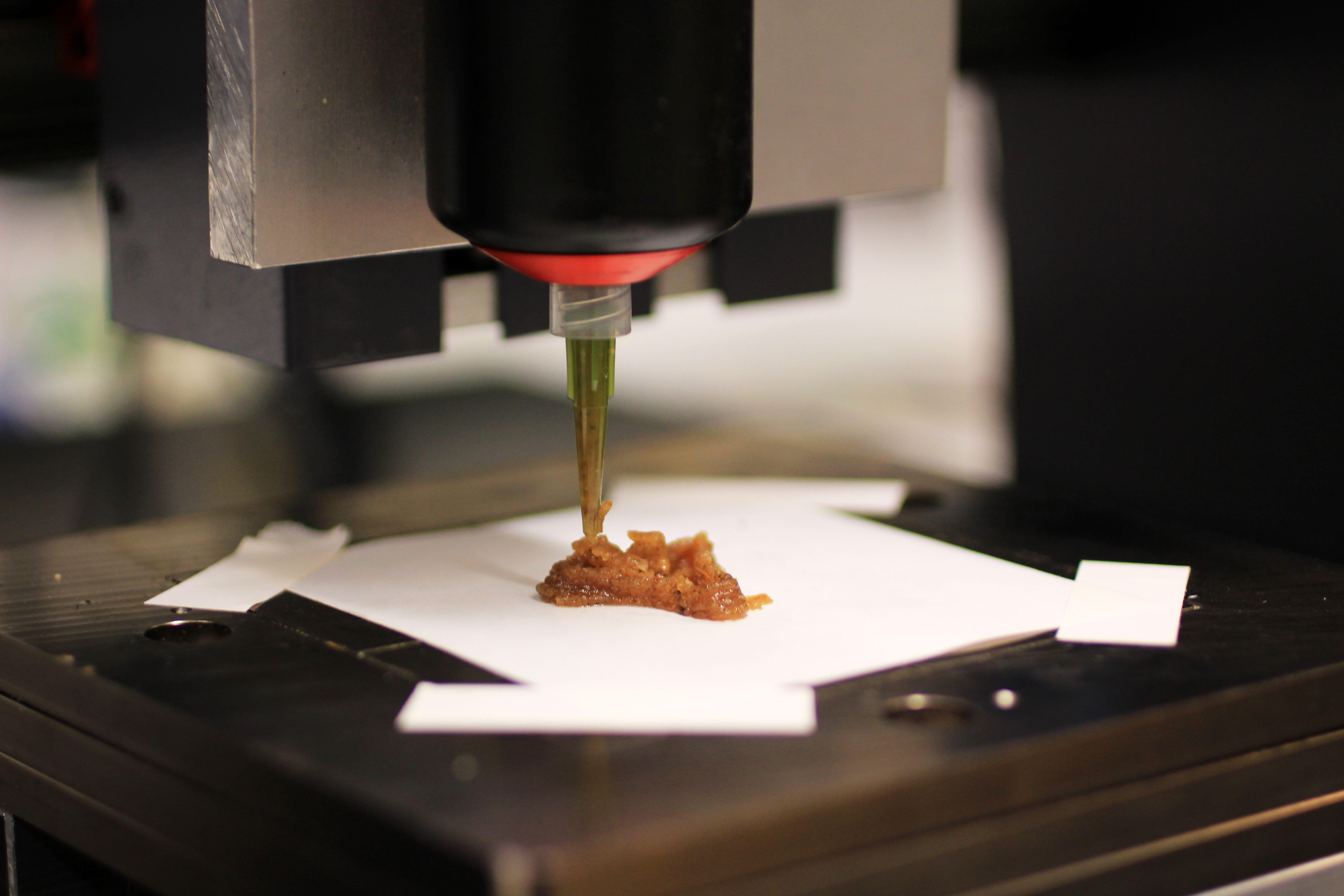 What were the challenges in the development of the project?
What were the challenges in the development of the project?
I think the most challenging part was the fact that I knew very little about the topics I wanted to combine. 3D printers both software or the hardware and microbiology. Though reading, experimenting and expert meetings the substantive part of the project developed every week, which simultaneously influenced the design part of the edible as well (physical appearance, eating behavior, packaging, thoughts about production and marketing etc.).
A natural, fresh product that transforms and develops in appearance, intensity of smell and taste at the consumers house
What feedback did you have from people? Would they eat any of your 3D printed living biscuits? Or is the idea of eating a mini fungus and watercress planter box still too much?
Until now, Edible Growth is exhibited at the Final Demo Days, during the Dutch Design Week and on Bright Day in Amsterdam. During these expositions I often bring small amuses to let the visitors experience how such a product could taste (see picture below). If I don’t offer them, they often remain untouched. But if I do offer the amuses and give an explanation, almost everybody becomes curious and like to try it. It’s quite funny to observe people passing by and doubting whether or not it’s edible.
Whereas a small percentage of the people don’t like to try the edible, everybody likes the appearance of the product. I receive many comments on how beautiful and delicious the prototypes look. Even chefs from all over the world have approached me for that reason and asked me when the product will be on the market!
 How, in your opinion, can new technologies influence supply chains, eating habits and food preparation methods?
How, in your opinion, can new technologies influence supply chains, eating habits and food preparation methods?
Dependent on the product the 3D-printer makes, the influence of this new technology on supply chains, eating habits and preparation methods might be negligible. But, in case of Edible Growth, the influence is enormous. Because the edible can be printed on demand, with the exact amount of raw materials inside a sterile recyclable packaging, the entire supply chains becomes very short:
- No agricultural land is needed
- No harvest
- No pre-packaging
- No distribution
- No conservatives necessary
- No storage in stores
- No decay or food waste
- < Co² emission
Because the product matures at the consumers house and people can harvest their own product at the preferred stage, they become more involved and conscious of the food they eat. New production methods can make different textures, structures and molecular compositions which might require new ways of eating! I’m very convinced that we can create entirely new products with new production methods that are completely new and surprising, but fully natural and healthy without additives by just using and combining the enormous amount of knowledge people in different disciplines (chefs, microbiologist, food-technologist, designers) have gathered throughout the years. We then use new technologies as tools to facilitate or enhance the natural!
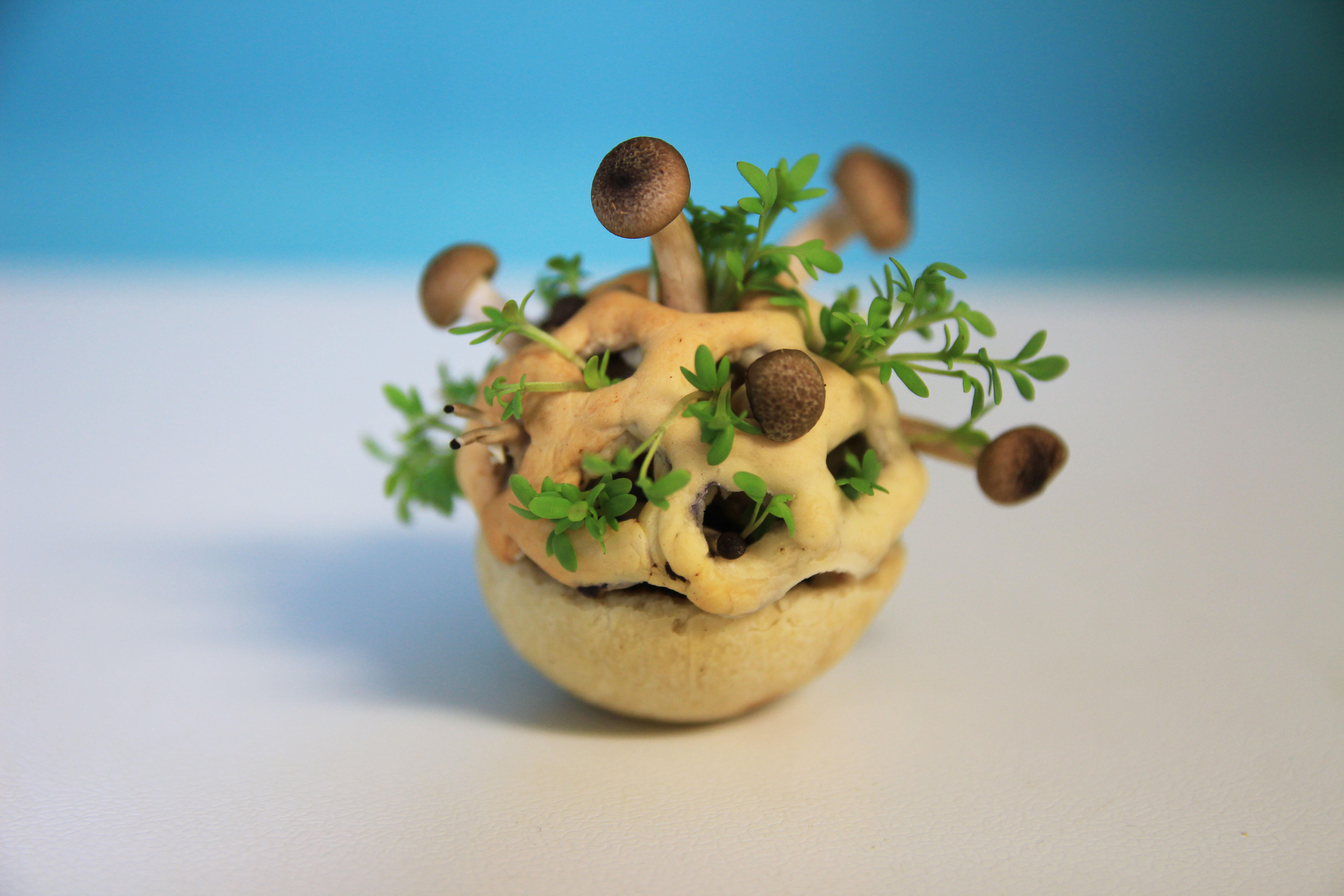 What are the possible benefits and risks or negative aspects, if there are, in Edible Growth?
What are the possible benefits and risks or negative aspects, if there are, in Edible Growth?
As mentioned above, the concept of Edible Growth shortens the supply chain enormously. It reduces Co2 emission, food waste and increases people’s awareness about the food they consume. It makes smart use of natural processes like fermentation and photosynthesis and uses the 3D-printer in a useful way instead of using it as a form machine.
Chefs from all over the world have asked me when the product will be on the market
Negative aspects are perhaps the time it takes for the product to develop and the size of the product. If you only use the raw material, seeds, spores, yeasts, you cannot eat the product directly out of the printer. It takes at least 3 to 4 days for the product to become edible and 5 for the fully grown product. That’s what I call real ‘Slowfood’! Another risk might be contamination and growth of unwanted organisms. Although that chance will be very small because the product will be printed in a sterile condition immediately inside the reusable greenhouse package with an adjusted climate.
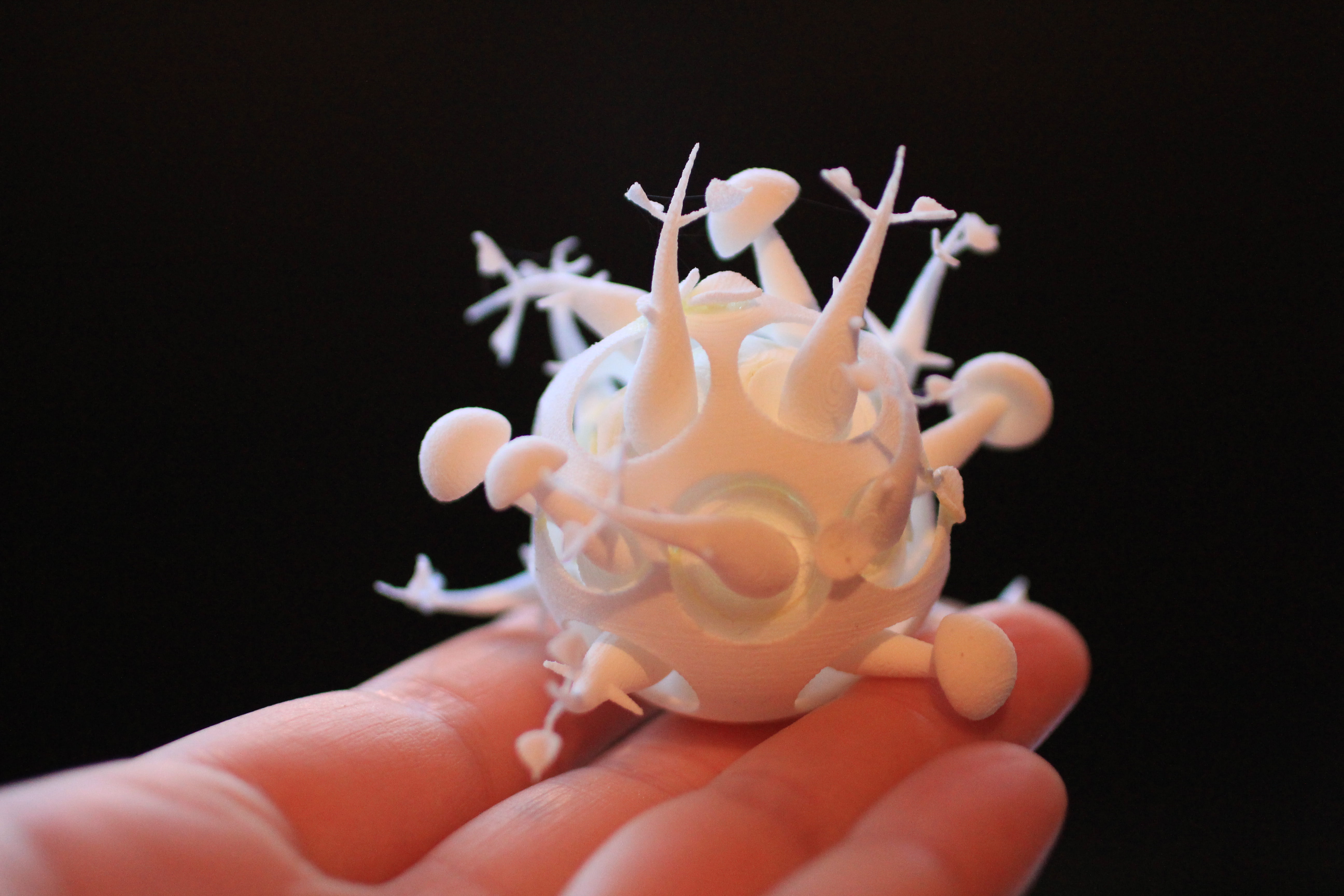 It seems technological change is speeding up. Do you feel this is the case also in the food design field? And where will this go?
It seems technological change is speeding up. Do you feel this is the case also in the food design field? And where will this go?
Well, I think everything in the field of food is speeding up. Increasingly more people are interested in where their food comes from, what conditions the animals had, how healthy it is, what it does to their body, discovering new food products and diets.
Technological development in the world of food is often used in the food industry to create processed foods with bliss-points to make people addicted to that food. Or in restaurants where they turn everything into a gel, mousse or foam; unhealthy, unsustainable and a waste of raw material if you ask me.
With Edible Growth people become more conscious of the food they eat
The demand for pure, natural and healthy food rising and I think food designers are well aware of that. We use these new technologies as a tool or inspiration to create healthy and sustainable food products that educate people and contribute to solving social, cultural or ethical issues!
I have no idea where it’s going, but I’m very curious! I’m also really excited and feel privileged that I can be part of those changes.
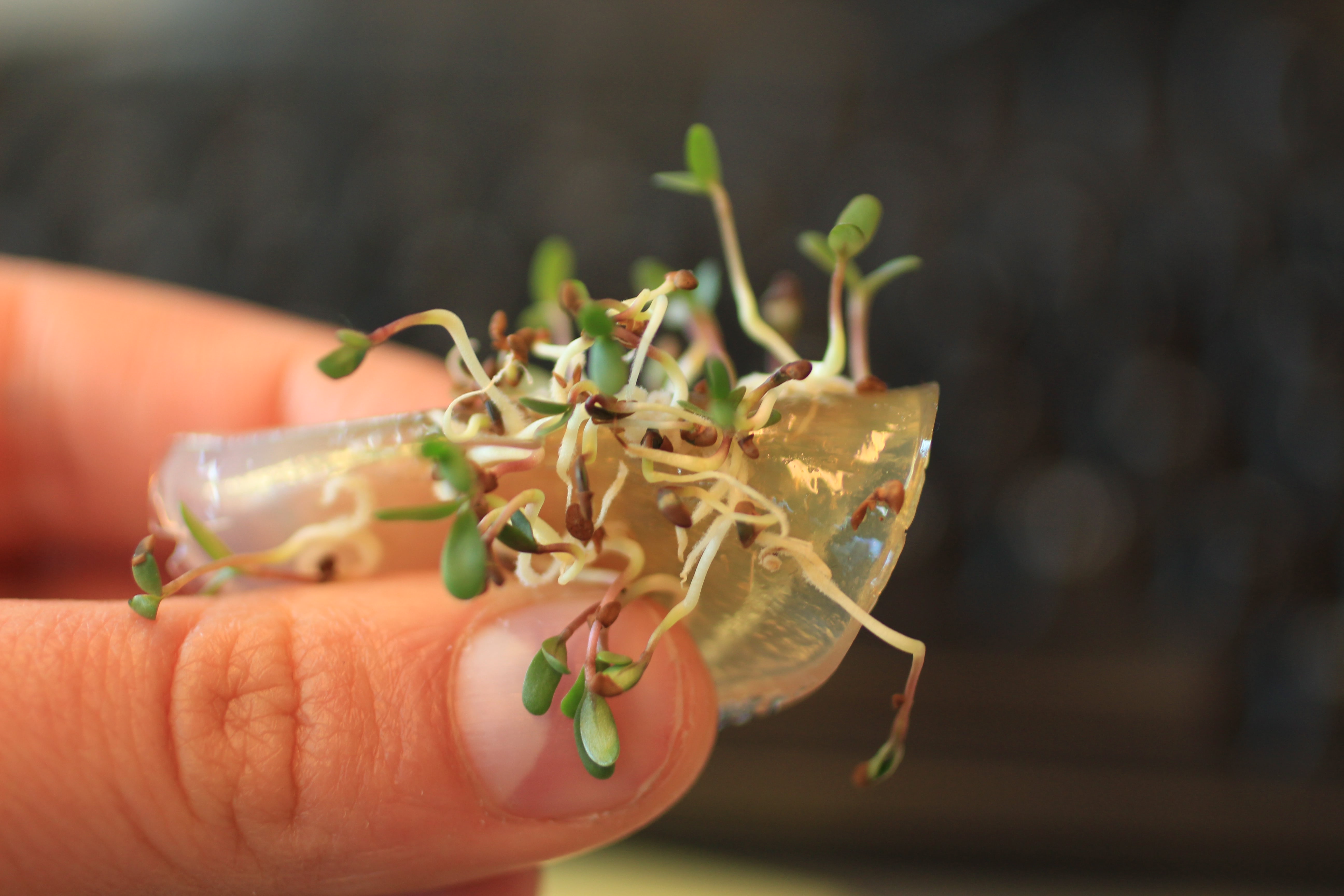 Which new food products do you envision?
Which new food products do you envision?
During the official opening of the DDW I told the host I would really like to see a future with more living food. Food that triggers all senses and is never eaten in front of the television or inside a car. I envision more vegetarian or vegan food, perhaps even with influence of the raw-food cuisine.
Do you see 3D printing food as a future way of production on a large scale? And what kind of food design do you expect will emerge from it?
Food printing is actually not something new, for example the glazing of pink cakes and microwave pancakes are already being printed for a very long time. But three dimensional food products are less common. Real food or full meals have not been printed yet, only sugar sculptures, chocolate, other sweets or dough and pasta.
I'd like to see a future with more living food. Food that triggers all senses and is never eaten in front of the TV
They just change the form by printing it, nothing really happens so I’m actually very sceptical about 3D-printing with food. But this was the same for non-food printing. First it was wobbly plastic, now they can print ceramic, wood, metal and concrete! So I think food-printing will develop as well. The kind of products that emerge depend on the development of the technology, the demand of products and the investing companies.
What are the main challenges for a food designer today?
I have not really come across challenges at this stage. I’ve received a lot of media attention, fan mail, job offerings and hear nothing but very positive reactions about my work. At this point I’m still figuring out what I really would like to do. If I’m going to continue with the Edible Growth project, or develop another future food concept I thought of. Because not so many people are working as food concept designers, there are enough opportunities and possibilities, I first have to make decisions myself.
Edible Growth is still a speculative concept, how is it close to become real?
Multiple printing technologies should be combined in order to print Edible Growth. Also the ingredient composition should be perfected and tested. An interdisciplinary team of biotechnologist, microbiologist, 3D-print experts and business developers is needed to complete the project and produce it.
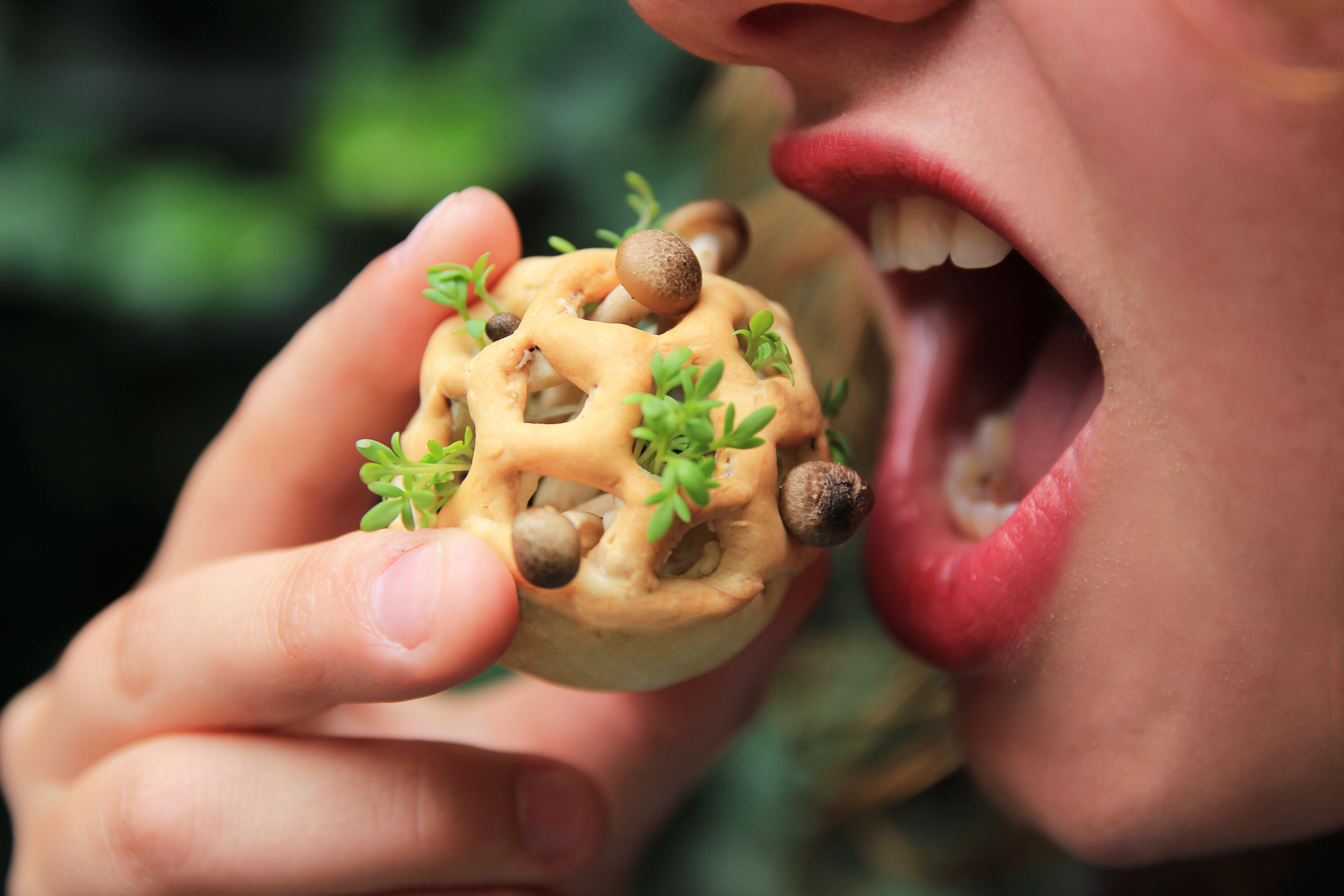 What are your big plans for the future?
What are your big plans for the future?
Edible Growth will be exhibited in 2015 at ‘Foodtopia’ at the Boerhaave museum, at the Noordbrabants museum in Leiden and during the München design week I’m talking to several companies about the development of Edible Growth. I hope I may participate in the 2015 edition of the Youth Food Movement Academy. I want to expand my knowledge of natural food and cooking so I can even better combine my
passion for food and nature with design, life sciences and culture. That’s why I am going to the Matthew Kenney culinary school in Belfast, Maine in America this summer to follow an intensive 6-week academy about raw gourmet food. It covers the whole process from picking the produce, knife techniques, menu planning, plate decoration to new cooking techniques. To cover part of the costs I will start a crowd-funding campaign in January to pre-sell exclusive Raw gourmet dinners for when I come back. After all this, I’ll see what direction I’ll go!
Thanks Chloé for sharing your work and viewpoints with us!
Related Posts: Interview: Alexandra Daisy Ginsberg, Interview: Floris Kaayk, Interview: Rachel Armstrong, Interview: Arne Hendriks, Interview: Jason Silva


Comments (0)
Share your thoughts and join the technology debate!
No comments yet
Be the first to share your thoughts!